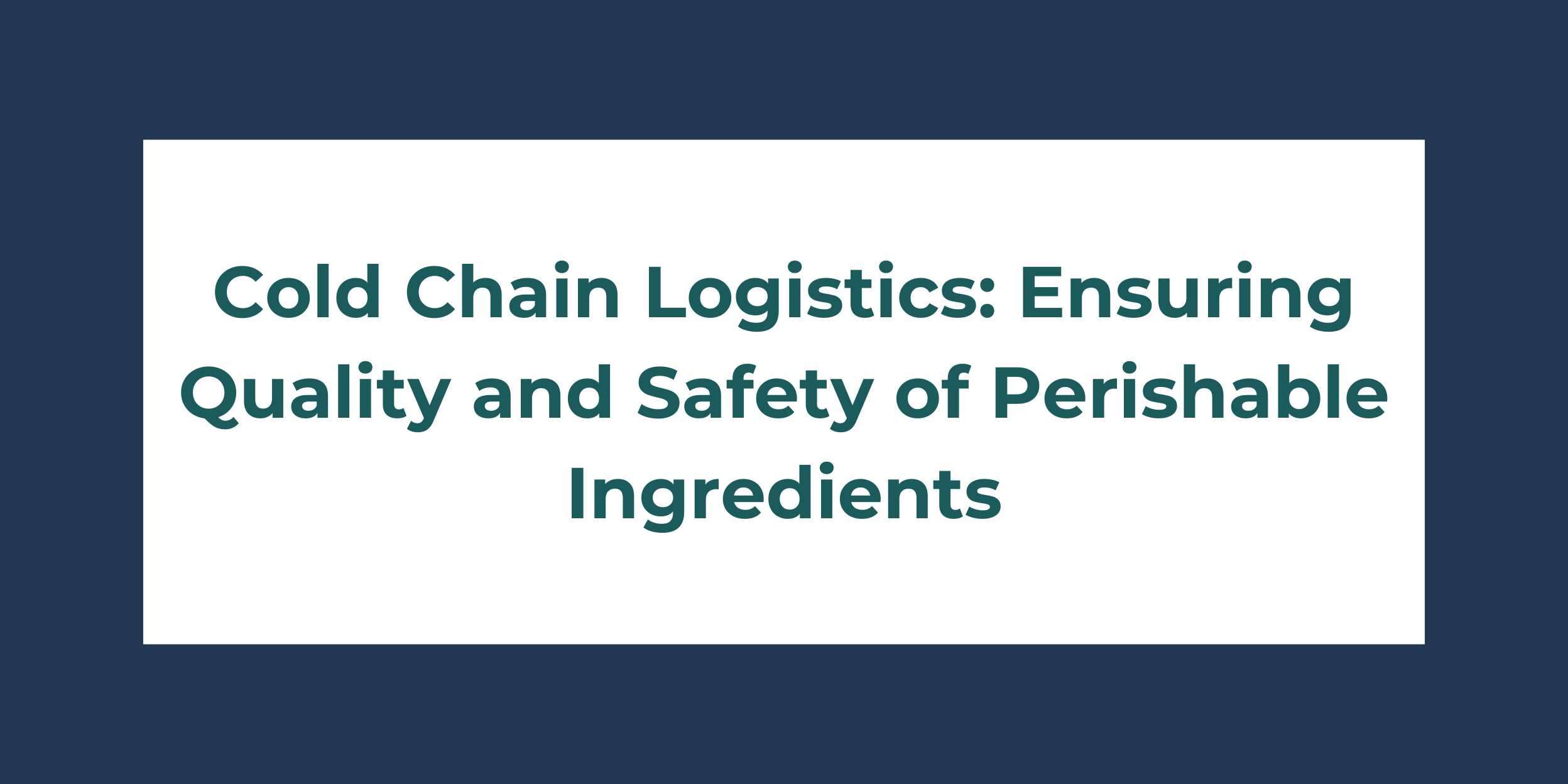Cold Chain Logistics: Ensuring Quality and Safety of Perishable Ingredients
In the food ingredient industry, the integrity of perishable products is paramount. Cold chain logistics play a critical role in maintaining the quality and safety of these ingredients from the point of origin to the final destination.
As demand for fresh and high-quality perishable goods continues to rise, the importance of an efficient and reliable cold chain cannot be overstated.
This blog delves into the significance of cold chain logistics, the challenges involved, and best practices to ensure the safety and quality of perishable ingredients.
The Importance of Cold Chain Logistics
Cold chain logistics involve the transportation and storage of perishable products at controlled temperatures to prevent spoilage and ensure safety.
In the food ingredient industry, this process is vital for maintaining the freshness, nutritional value, and sensory qualities of ingredients such as fruits, vegetables, dairy products, meats, and seafood.
Challenges in Cold Chain Logistics
- Temperature Control
- Maintaining the correct temperature throughout the supply chain is critical. Temperature fluctuations can lead to spoilage, reduced shelf life, and potential food safety hazards.
- Solutions include using insulated containers, refrigerated vehicles, and temperature monitoring devices to ensure a consistent environment.
- Infrastructure Limitations
- In many regions, particularly in developing countries, infrastructure for cold storage and transportation may be inadequate.
- Investing in modern cold storage facilities and partnering with reliable logistics providers can help bridge this gap.
- High Operational Costs
- The costs associated with maintaining a cold chain are significantly higher than those for non-perishable goods due to the need for specialized equipment and energy consumption.
- Adopting energy-efficient technologies and optimizing routes can help reduce operational costs.
- Compliance with Regulations
- The cold chain must adhere to strict regulatory standards to ensure food safety. Compliance with these standards can be complex and varies by region.
- Staying updated with local and international regulations and obtaining necessary certifications can help ensure compliance.
Best Practices for Ensuring Quality and Safety
- Comprehensive Planning and Monitoring
- Effective cold chain logistics start with thorough planning. This includes selecting appropriate packaging materials, choosing reliable transportation partners, and planning optimal routes.
- Continuous monitoring of temperature and humidity levels using IoT-enabled sensors can provide real-time data and alerts for any deviations, allowing for immediate corrective actions.
- Investment in Technology
- Advanced technologies such as blockchain can enhance transparency and traceability in the cold chain. Blockchain enables secure recording of temperature data at every stage, ensuring that all parties have access to accurate information.
- Implementing automated systems for loading and unloading can minimize the time perishable goods spend outside controlled environments.
- Training and Education
- Ensuring that all personnel involved in the cold chain are properly trained in handling perishable goods and operating specialized equipment is crucial.
- Regular training sessions and updates on best practices and regulatory requirements can help maintain high standards.
- Regular Maintenance and Audits
- Regular maintenance of refrigeration units, vehicles, and storage facilities is essential to prevent equipment failures that could compromise the cold chain.
- Conducting periodic audits of the entire cold chain process can identify potential weaknesses and areas for improvement.
- Collaboration and Partnership
- Building strong partnerships with logistics providers, suppliers, and customers can enhance the efficiency and reliability of the cold chain.
- Collaborative efforts can lead to shared investments in infrastructure and technology, as well as the development of standardized protocols for handling perishable goods.
Conclusion
Cold chain logistics are indispensable for ensuring the quality and safety of perishable food ingredients.
By addressing the challenges and implementing best practices such as comprehensive planning, investment in technology, regular maintenance, and strong partnerships, businesses can maintain the integrity of their products and meet the growing demand for high-quality perishable goods.
As the food ingredient industry continues to evolve, the adoption of advanced cold chain logistics will be crucial in sustaining the freshness and safety of perishable products from farm to table.








